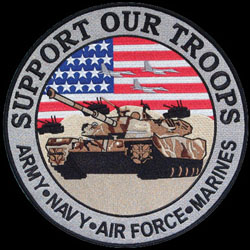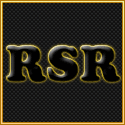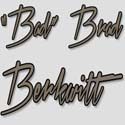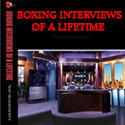This past December 2nd, I was preparing myself for what I referred to as “Sinatra Weekend. It was a Friday, and that coming Sunday, I was to perform for the first time on stage as part of the Sinatra Birthday Bash, an annual tribute concert event held at the Count Basie Theatre in Red Bank, New Jersey. Before the show was to be held, a session was scheduled at Carroll’s Music Studio in Midtown Manhattan, a rehearsal where the cast of the production would review their performances with the entire orchestra. When one of my charts was called, I strode to the nearby microphone and took a survey of the entire contingent, a strings and brass ensemble of thirty pieces.
Looking at all of these professionals, I wondered if Sinatra had experienced a similar feeling when reviewing the musical splendor assembled before him. Indeed, December 2nd was a landmark date for Sinatra, as on that day fifty-five years before I stepped up to rehearse a tribute to his music, the singer himself was climbing on stage at Sydney Stadium in Australia, beginning the first of a two-concert date that would mark his second tour to the far flung locale.
Sinatra had already traveled many parts of the world bringing his voice to the distant masses up to this early-1960s point in his career, and would continue to do so in the intervening thirty-odd years that would follow, but it was perhaps that “land down under,” the place known as the “Lucky Country” in the Southern Hemisphere that would see the Chairman of the Board traveling the farthest in order to satisfy the demands of his global fan base. Sinatra made it known that he liked Australia, and in particular, was always impressed with the orchestras he was paired with when working there, naming their musical ensembles in a top three placement along with Los Angeles and London.
The ill-fated events of a July 1974 concert stopover nearly marred the association. A series of intertwining unfortunate events would befall the singer on this visit, including cancelled concert dates, the constant clamoring of the paparazzi, not to mention Sinatra’s own angered remarks in response to the behavior of the press. Relations between singer and locale would sour for a period afterwards, and the events that transpired would not only be great tabloid fodder for the press but would even inspire a late 1990s film based on the events starring Dennis Hopper as Sinatra.
Sinatra would later return to kangaroo territory over the years, thrilling concert audiences in both Melbourne and Sydney, as well as Brisbane, into the 1990s and the final years of his career.
Two of the most unique and awe-inspiring performances of that career have both been preserved in audio, and in the case of one, video form, and coincidentally enough, feature Sinatra (in his vocal prime) performing for Australian audiences. The first, the more interesting of the two, sees Sinatra in 1959 eschewing his usual standard orchestra and backing himself with the minimal sounds of a hip jazz quintet, headed by another dynamite musician from the Sinatra realm, the noted American vibraphonist Red Norvo.
Later seen backing Dean Martin in the lounge of the Sahara Hotel in a memorable scene of the 1960 Rat Pack caper film “Ocean’s Eleven,” the bearded Illinois native provided, in just two concerts, one of the most intricate collaborations in Sinatra’s recorded work.
Having worked with the singer during American concert dates in recent months, most notably at the 500 Club in Atlantic City, the decision was made to have Norvo and his band accompany Sinatra on this short tour, a hip combo that included Jimmy Wyble on guitar, Red Wooten on bass, John Markham on drums, Jerry Dodgion doubling on flute and alto saxophone, Norvo on vibes, and supplemented by Sinatra confidante and virtual right hand Bill Miller tinkling on the piano.
Two concerts were held at West Melbourne Stadium on March 31st and April 1st of 1959, later edited together to create one superfluous performance. Two instrumentals (“Perdido” and “Between The Devil and the Deep Blue Sea”) begin the concert, a rousing start totaling ten minutes of music before Sinatra enters to the swingin’ sounds of “I Could Have Danced All Night,” from his recent album (“Come Dance With Me!”) with Billy May the year before, only the beginning of a thrilling concert program that includes “Just One Of Those Things,” “At Long Last Love,” “I’ve Got You Under My Skin,” “The Lady Is A Tramp,” “Come Fly With Me,” and “Dancing In The Dark.” For those used to listening to the original studio recordings that feature Sinatra paired with either big band or full symphony orchestra, listening to Sinatra perform the same arrangements with this drastically pared down musical accompaniment is a dynamite listening experience.
Great moments documented in this concert include a jovial Sinatra yelling “Get your hand off that broad!” in response to a woman’s delightful scream from the audience during the opening lines of “I’ve Got You Under My Skin,” as well as an explanation to the audience as to the legal troubles surrounding Rudyard Kipling’s family and their dislike of his version of “On The Road To Mandalay,” which Sinatra uses to cap the concert. In fact, the final two songs of the show, “Night and Day” (1957 Riddle arrangement) and “Mandalay” are augmented by a local orchestra, joining the hip quintet and bringing the concert to a swingin’ finish.
Although he wished to work with Norvo and his group more extensively, misunderstandings and conflicting work schedules kept their collaboration limited following this Australian jaunt (although Sinatra, loving the sound of the small group, would assemble his own little ensemble fronted by Bill Miller with whom he would work with many times between July 1960 and the spring of 1962).
Returning to Australia again in the winter of 1961 under the banner of Lee Gordon and Perrin Productions, Sinatra this time elected to have a full orchestra back him, the action moving west to Sydney Stadium. While the program of his 1959 stand focused on a general overview of his recorded work of the previous six years at Capitol Records, the 1961 concert sees him featuring a bulk of new material he recorded during the course of the preceding year, including four arrangements from his recent album “I Remember Tommy” with orchestrations by former Tommy Dorsey sideman Sy Oliver.
Nelson Riddle is featured prominently in the opening and closing of the show, with his classic arrangements “I’ve Got The World On A String” and “The Lady Is A Tramp,” as well as several other songs throughout the program. Johnny Mandel is also given prime placement in the opening numbers of the show with his arrangements of “A Foggy Day” and “In The Still Of The Night” written for the “Ring A Ding Ding!” album of the year before. With the latter tune, Sinatra detects something off with either his vocal or the sound of the orchestra, and in a move unusual for the singer in concert, stops singing and respectfully asks the orchestra to begin the song once again from the top.
As stated earlier, both concerts feature the singer at the peak of his vocal powers. The 1959 concert would surface first a bootleg (“Sinatra Live In Concert — A Tour De Force”) before Blue Note Records gave the concert its first, remastered official release in, nearly thirty-eight years to the day that the show was first recorded. Featuring extensive liner notes written by Will Friedwald and curtailed from his recent book release “Sinatra! The Song Is You” (a virtual bible to Sinatra aficionados), “Live In Australia” is a prized release amongst Sinatra collectors today.
The 1961 concert also first surfaced as a bootleg known as “December Down Under” before receiving two official releases by the Sinatra estate. It was first included, in an edited, truncated form as a bonus disc for the Target release of the 2015 centennial compilation “Ultimate Sinatra,” then released in its full form as the second disc of the globe-spanning 2016 box set of Sinatra locale concerts entitled “Sinatra: World On A String.” An accompanying production booklet contains great detail about the concert and surrounding events, and makes, along with the 1959 disc, two worthy additions to a Sinatra music collection.
Whether you prefer Sinatra with the little group or the big orchestra, they’re the Chairman singing his best, at his best. Do I have to say it? Check ‘em out.
Until next time, Sinatra lovers!
Jerry Pearce is an amateur singer in the vein of Frank Sinatra, Perry Como, and Dick Haymes and has released two discs of standards music, Crossroads in 2010, and One Summer Night in 2016. Samples of his music can be heard on his YouTube Channel. To purchase his CDs use the form box below.
[si-contact-form form=’3′]

 January 23rd, 2017
January 23rd, 2017  CEO
CEO 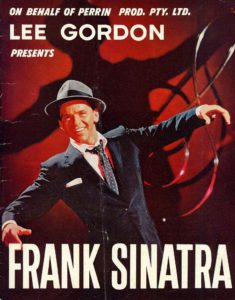
 Posted in
Posted in  Tags:
Tags: 